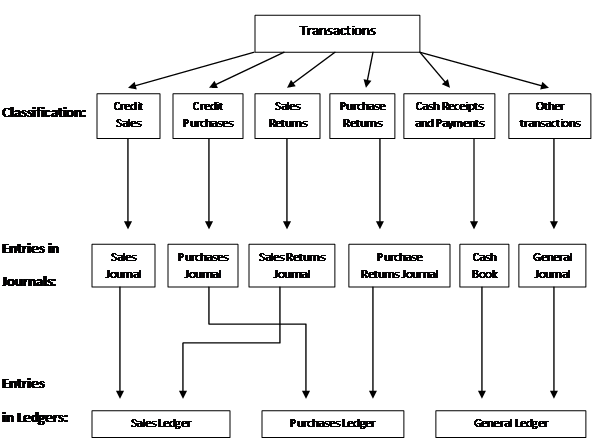Accounting short course: Books of original (prime) entry and ledgers
The example in our post on T-Accounts gives a brief idea of how transactions are recorded in accounts. However to actively use T-account and locate specific transactions it is important that another layer of organization is added to accounting records. Otherwise given the number of transactions and the number of accounts it would take businesses ages to find any account or transaction manually. There is a process by which accounting entries are recorded and specific types of accounts are placed in accounting Journals and Ledgers, making it easier to find them.
Whenever a transaction occurs in a business, it is classified as either:
- Credit sales of inventory, in which case it goes to Sales Journal.
- Credit purchases of inventory, in which case it goes to Purchases Journal.
- Return of inventory by customers, in which case it goes to Sales Returns Journal.
- Return of inventory by us to the suppliers which go to Purchase Returns Journal.
- All the transactions involving cash or bank go to Cash Book.
- Any other transactions go to General Journal.
The text in bold indicates all the books of original entry. They are called books of original entry for the reason that any transaction business has to record is first recorded in one of these books. We will discuss these journals in our post on individual Journals.
From these journals the entries move on to the ledgers, where they are summarized and where T-accounts are kept. There are three different ledgers:
- Sales Ledger: all the customers’ personal accounts are kept in this ledger.
- Purchases Ledger: accounts of the suppliers’ of inventory are kept in this ledger.
- General Ledger: all the other accounts are kept here like capital, expenses etc.
Following is a summary of accounting Journals and Ledgers that we have covered so far.
Figure 1 Accounting Journals and Ledgers


Comments are closed.